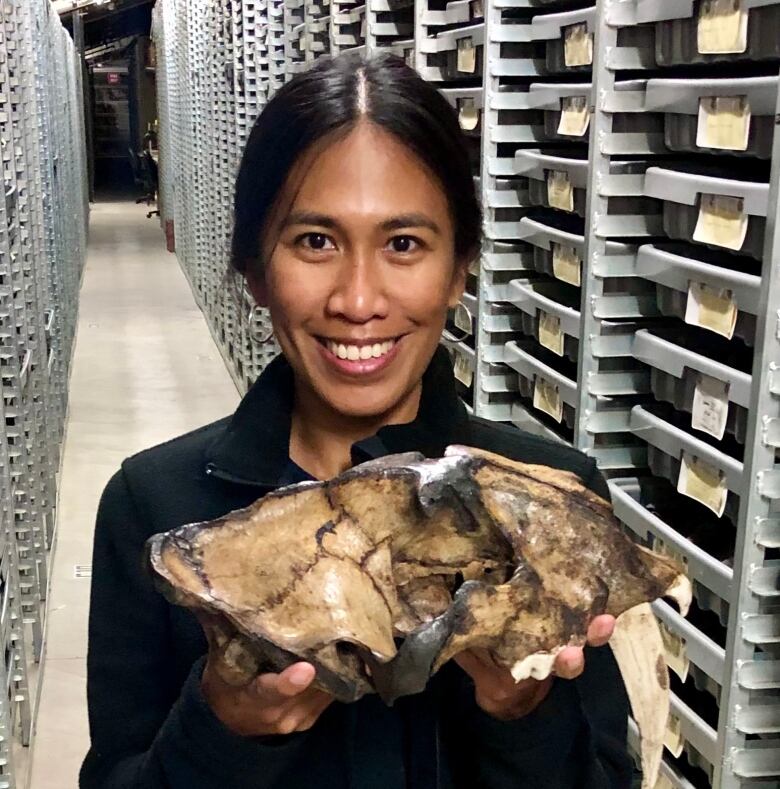MUTUAL AID VS SPENCERIAN SOCIAL DARWINISM
Sabre-toothed cats cared for each other when injured, fossil evidence suggests
A cat with a painful hip disability lived a long life, suggesting
it had help on the hunt
Scientists have found that the fossilized remains of an adult sabre-toothed cat show signs that it lived with a congenital hip condition, suggesting that it lived in a social group with other cats who were able to help it hunt and feed.
The researchers identified the cat's pelvic bone showed evidence of long-term hip dysplasia, a developmental birth defect that is common in modern times in dogs and cats, but also well-known in humans.
The cat's fossilized remains were found in the La Brea Tar Pits in Los Angeles, an area the size of several city blocks. The pits have preserved the remains of animals that were trapped in sticky tar over tens of thousands of years.
Paleontologists have found a wealth of fossil remains in excavation of the pits.
The La Brea Tar Pits and Museum, which is part of the Los Angeles Natural History Museum, is home to a collection of the remains of about more than 2,000 extinct sabre-toothed cats, as well as many other animals, including other extinct animals like ground slots to mammoths.
Hips don't lie
The team of researchers, including paleontologist Mairin Balisi, decided to investigate a puzzling pattern.
A surprising number of fossils of Smilodon fatalis, the sabre-toothed cat that lived in the Los Angeles area up until about ten thousand years ago, showed evidence of hip damage.
The injuries were previously assumed to have been sustained from the aggressive hunting style required to bring down much larger prey than themselves, like bison.
But an in-depth study of that one pelvic bone found something else, which overturned that previous assumption.
"A CT scan of this specimen at Cedar Sinai Hospital here in Los Angeles found no evidence of fractures," said Balisi, who is also a postdoctoral fellow at the La Brea Tar Pits and Museum.
"If this had been from an injury, there would have been fractures preserved in the bone. Instead, symptoms that supported the diagnosis of hip dysplasia were found," she told Quirks & Quarks host Bob McDonald.
Hip dysplasia occurs when the hip socket doesn't fully cover the ball portion of the thigh bone. Normally the top of the femur fits into the hip socket to create the hip joint. But in the case of hip dysplasia, there is an incomplete formation, or deformation of the hip socket.
"This condition would have degenerated over the animal's life, and so it would have started limping," Balisi said. "At some point, bone was rubbing on bone, and we see evidence of that in the skeleton. Hunting would have been painful and difficult."
The team's findings were published last month in Nature.
Why might big cats with bad hips be social?
The fact that this sabre-toothed cat lived to adulthood with such a debilitating condition suggested to Balisi and her colleagues that it had help from other cats to survive.
This implied a degree of sociality in sabre-toothed cats not fully understood before. Cats today show a range of social behaviours but frequently live as largely solitary, territorial hunters.
"It reached the same size as adult specimens that we have at the Tar Pits without this condition," Balisi said. "That suggests to us that it must have had enough food. We infer that it must have had help with some sort of food provisioning happening."
This may have taken the form of group hunting, in which the disabled cat wouldn't have had to take on the physically demanding role of taking down a large animal by itself.
This idea prompted Balisi to take a second look at some of the other sabre-toothed cat pelvic specimens in the collection. She wondered if they too had been mistakenly identified as having suffered an injury, instead of hip dysplasia.
"We did look at dozens of other specimens in the pathology collection at the La Brea Tar Pits, but it's difficult to make a definitive diagnosis of hip dysplasia without CT scans," she said.
"These specimens do show external signs that might be interpreted as hip dysplasia. Now with our study, we are prompted to reevaluate this."
If such reevaluation does find widespread evidence of hip dysplasia in sabre-toothed cats, it could help reinforce the case that these animals were consistently social. However, Balisi said other evidence will likely still be required, because it's difficult to be certain when it comes to understanding how extinct animals behaved.
"Sociality is very difficult to infer in the fossil record." she said.
"[However,] I think that it would be safe to say from our study that sabre-toothed cats lived in social groups. They were probably more social like lions rather than more solitary like tigers and leopards."
Written and produced by Mark Crawley.



No comments:
Post a Comment